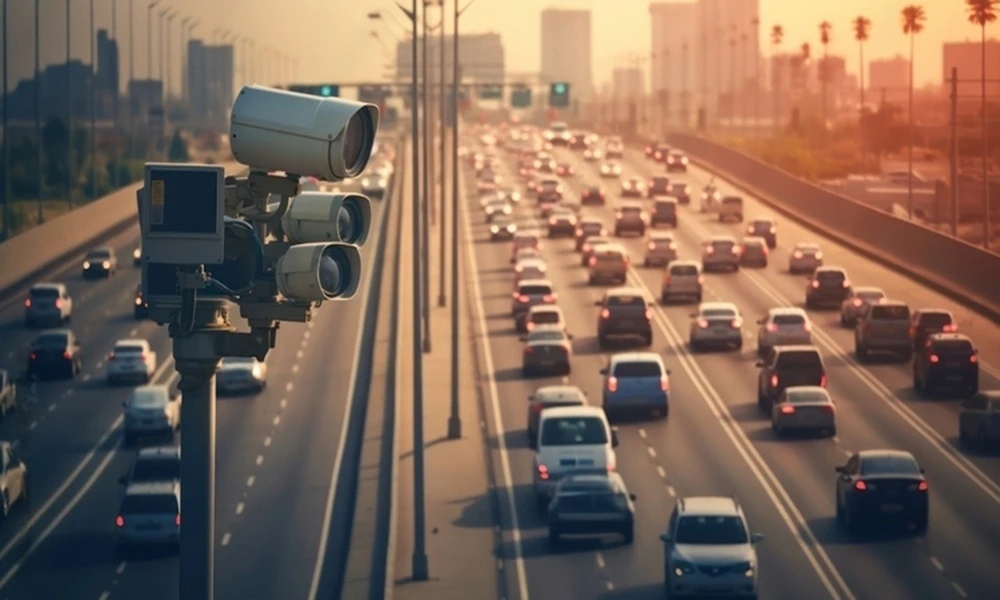On the Road to Tomorrow: How AI Cameras Are Driving Transportation into the Future
Category: AI Camera, Smart Road Technologies
In the vast network of transportation, where every journey counts, AI cameras are emerging as the navigators of tomorrow. These unassuming lenses, guided by the intelligence of artificial intelligence, are not just capturing images of roads and vehicles—they are transforming the way we move and travel. Join us on a journey into the realm of transportation, where the watchful eyes of AI cameras are steering us toward safer, more efficient, and smarter travel experiences.
1. Traffic Management: Easing the Commute Chaos
- AI cameras play a crucial role in managing traffic flow. Mounted on roads and intersections, these cameras analyze real-time traffic patterns. They can detect congestion, identify accidents, and optimize taffic signals to keep vehicles moving smoothly.
2. Smart Parking Solutions: Finding Your Spot with Ease
- AI cameras contribute to smart parking solutions. Equipped with license plate recognition and occupancy detection, these cameras help drivers find available parking spaces efficiently. The data gathered enables cities to optimize parking resources and reduce traffic caused by drivers searching for parking.
3. Public Transportation Monitoring: Ensuring Smooth Transit Operations
- In the realm of public transportation, AI cameras monitor transit operations. From buses to trains, these cameras provide insights into passenger loads, vehicle conditions, and adherence to schedules. This data helps transportation authorities optimize routes and enhance overall service quality.
4. Vehicle Safety: Preventing Accidents on the Road
- AI cameras enhance vehicle safety by providing advanced driver assistance systems (ADAS). These cameras, often integrated into cars, can detect lane departures, forward collisions, and pedestrian movements. They contribute to preventing accidents and improving overall road safety.
5. Traffic Enforcement: Ensuring Rule Adherence
- AI cameras contribute to traffic enforcement by monitoring adherence to traffic rules. From red-light violations to speeding, these cameras capture instances of rule violations. The data collected is used for issuing citations and promoting safer driving behaviors.
Conclusion:
In the conclusion ever-moving world of transportation, AI cameras are not just capturing snapshots of the journey—they are shaping the very landscape of how we move. From easing traffic woes to ensuring vehicle safety, the watchful eyes of AI cameras promise a future where transportation is not just a means of getting from A to B, but a seamless, efficient, and safer experience for all. The road ahead is illuminated by the intelligence of AI cameras, steering us toward a future of smarter and more sustainable transportation.
CASE STUDIES
Case Study 1: Singapore’s Smart Nation Initiative - AI-Driven Traffic Management
Challenge:
- Singapore, known for its efficient urban planning, faced challenges related to growing urbanization and increased traffic congestion. The need arose to manage traffic more effectively and enhance the overall transportation experience for residents.
Solution:
- As part of the Smart Nation Initiative, Singapore implemented an AI-driven traffic management system. AI cameras were strategically placed across key intersections and roadways. These cameras, equipped with computer vision and machine learning algorithms, analyzed real-time traffic data. The system could predict congestion, identify traffic incidents, and optimize traffic light timings to alleviate bottlenecks.
Outcomes:
- The implementation of AI-driven traffic management in Singapore led to significant improvements in traffic flow and reduced congestion. The predictive capabilities of the system allowed for proactive interventions, preventing traffic jams before they occurred. Commuters experienced smoother journeys, and the city showcased how AI cameras could be leveraged to create a more efficient and responsive transportation infrastructure.
Case Study 2: London’s Congestion Charge Zone - AI Cameras for Traffic Monitoring and Congestion Reduction
Challenge:
- London faced challenges related to increasing traffic congestion and air pollution within the city center. The city sought to implement measures that would reduce congestion, improve air quality, and promote sustainable modes of transportation.
Solution:
- London introduced the Congestion Charge Zone, an area where vehicles are charged for entering during peak hours. The implementation involved the use of AI cameras equipped with license plate recognition technology. These cameras monitored vehicles entering the zone, automatically identifying those subject to the congestion charge.
Outcomes:
- The introduction of the Congestion Charge Zone, supported by AI cameras, led to a reduction in traffic congestion and encouraged the use of public transportation. The real-time monitoring capabilities of the cameras allowed for effective enforcement of the congestion charge. As a result, London saw improvements in air quality and a shift toward more sustainable transportation options, showcasing how AI cameras can play a pivotal role in urban congestion management.

